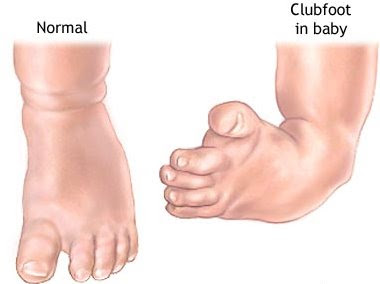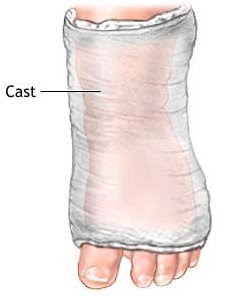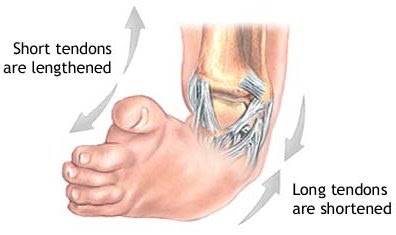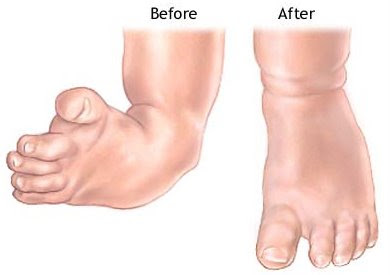
The newborn baby's deformed foot is initially treated with casts. The tendons, ligaments, and bones are still quite flexible and easier to reposition. The foot is stretched into a more normal position and a light-weight cast is applied to retain the corrected position. The cast will be removed every week or two so the foot can be further stretched into better position and maintained with a new cast. This serial casting is continued for three or more months and is successful in at least 50% of cases. If the casts do not provide enough correction of the clubfoot, surgery is considered.

The type and extent of surgery depends on the how severe the deformity is. The defect involves tight and short tendons around the foot and ankle. The surgery involves lengthening some tendons and shortening other tendons to place the bones and joints in normal positions. A cast is applied to the foot after surgery to maintain its position while it heals.

The child will stay in the hospital for approximately two days after surgery. The foot will be casted and kept elevated, with ice packs used to reduce swelling and pain. Medications can be used for pain. The skin around the cast and the toes will be checked frequently for the first 48 hours to make sure that the circulation, movement, and feeling are maintained. Before leaving the hospital, the parent will be taught how to take care of the cast, which is usually left on for about three months. Skin irritations from the cast or incision infections may occur. Physical therapy is usually required after the cast is removed to strengthen the muscles in the repaired foot.

Entire article found here.